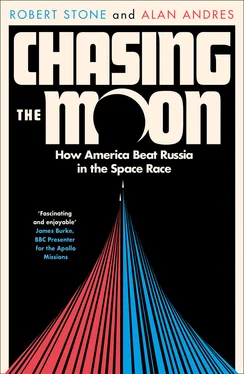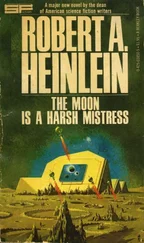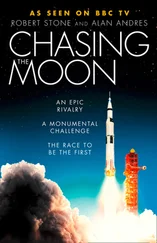Korolev realized the R-7 could put a satellite in orbit, if that was of interest to the Kremlin. Following Eisenhower’s International Geophysical Year announcement, Korolev sent a memo noting that should Russia want to set a world record by launching a satellite, they could do so at practically no additional cost. When Khrushchev gave his consent, he never anticipated the alarmist reaction in the United States. While the Soviet space program’s principal purpose was—and remained—military, Sputnik’s overnight success suddenly elevated the role of space research in the eyes of the Kremlin, making it an engineering, scientific, and propaganda priority.
NASA’s charter specifically restricted it from any responsibility for military defensive weapons or reconnaissance satellites. That separation between NASA and the Pentagon allowed it to act as Washington’s public face for promoting scientific research, furthering exploration, and bolstering national prestige, while deflecting attention from ongoing military space initiatives. In fact, during NASA’s first year of operation, the Pentagon’s space budget was nearly 25 percent larger.
NASA’s formation left the fate of the Army Ballistic Missile Agency in Huntsville uncertain, with both General Medaris and von Braun taking a predictably negative view of the new civilian agency. In addition to the existing NACA facilities, NASA brought the Army’s Jet Propulsion Laboratory and the Navy’s Vanguard group under its umbrella. Glennan, NASA’s new administrator, proposed bringing half of von Braun’s group at the Army Ballistic Missile Agency within NASA, an idea that von Braun immediately killed by using his celebrity status to sway political and public opinion. Both General Medaris and von Braun feared that under NASA, the Huntsville group would lose its unique position and become a small part of a larger, and probably dysfunctional, government agency.
As 1958 came to a close, President Eisenhower surprised the world with his own space-propaganda stunt, intended to deliver multiple messages. One was a message of peace; a second was a bit of blatant saber rattling directed at the Soviets; a third was a ploy to silence Eisenhower’s critics; and a fourth was a sly dismissal of America’s premier space-age celebrity. Under tight secrecy, an Air Force Atlas missile weighing more than four tons was launched into orbit. Transmitted from a tiny box inside the huge Atlas, a recording of Eisenhower’s voice proclaimed, “America’s wish for peace on Earth and goodwill toward men everywhere.” By orbiting the entire Atlas missile—an achievement of little distinction in itself—the United States could technically claim to have placed the heaviest satellite into space.
Still, it wasn’t lost on the Soviets that the sentiments voiced on the tape had in fact been delivered by a new ICBM, specifically designed to transport a thermonuclear warhead. Nor was it lost on von Braun and many in the media that Eisenhower had excluded the Army’s team in Huntsville from a starring role in a space-age first, intended to boost American prestige. The head of the new Advanced Research Projects Agency, which oversaw Project SCORE as it was called, described it as essentially “a propaganda ploy designed to put a really big, heavy object into space as a means of silencing press and congressional complaints about small payloads and rocket failures.”
The media gave the stunt plenty of coverage during the holiday season, but it ultimately achieved little of importance, not even as the first device to transmit a message from space to people on Earth. It was quickly forgotten. Von Braun had concluded that despite their potential to revolutionarily change society, communications satellites would never engage the public or motivate politicians to fund a massive space effort like the piloted program he envisioned. He knew that the fear of annihilation, the loss of military superiority, or the erosion of national prestige were greater motivators among those in power, just as they had been in his dealings with the Third Reich. He was intrinsically aware that the public’s imagination would be fully engaged only when an intelligent being was on board a spacecraft, providing a vicarious adventure of a singular and historic nature.
And, indeed, nothing NASA undertook during its first year captured the public’s attention more than the selection of the nation’s first astronauts. It was this step that brought the dream that had consumed the minds of Clarke, Ley, von Braun, and many others for nearly three decades to the verge of reality.
Sensing that this was not only a good story but also a turning point in human history, journalists searched for a way to portray the men who would experience the unique, dangerous, and otherworldly. Even though there was little to distinguish the first seven astronauts from any other group of military pilots when NASA introduced them at a Washington, D.C., press conference in April 1959, the media rapidly promoted them as exemplars of American masculinity, courage, resourcefulness, and intelligence.
Though they spoke of wanting to travel into space in the near future, both Clarke and von Braun were already a few years older than John Glenn, who at age thirty-seven was the oldest of the seven Mercury astronauts. He had been chosen from an initial group of five hundred applicants, with the finalists representing the Navy, Air Force, and Marine Corps. Five had experienced air combat in World War II or Korea, and the same number had been military test pilots. All were reported to have IQs greater than 130, and, coincidently—or not—all were firstborn or only children. Coming from a fraternity of combat fliers and jet jockeys, the Mercury Seven, as they came to be called, had no intention of being treated like confined lab rats in a glorified orbiting science experiment. They saw themselves first and foremost as active pilots.
However, neither they nor NASA were prepared for how their fairly routine press conference would become a pivotal moment in the marketing of the American space program and the transformation of modern celebrity. Preceded by stories of past air heroes like Charles Lindbergh and a decade of Hollywood science-fiction films, the seven pilots were thrust into starring roles in the television age’s first heroic real-life narrative. They and their families were abruptly placed under the modern media’s spotlight. Ghostwritten and sanitized versions of their lives appeared in heavily promoted issues of Life magazine, the result of a controversial NASA-approved contract that gave the magazine exclusive rights to the personal stories of the astronauts and their wives, even though the men were government employees. Since information related to their work had been understood to be freely available to all, journalists from rival publications naturally felt as though they were being shut out and they criticized the arrangement, to no avail. As part of the agreement, the astronauts were given a life-insurance policy and additional income to supplement their modest military salaries. Almost as important to them, the exclusive nature of the contract gave them justification to decline countless other media requests, and as a result it indirectly protected the privacy of the astronauts and their families when they were not the focus of a Life feature.
Not surprising given the tenor of the time, NASA gave no consideration to women as astronaut candidates. Despite the example of Jacqueline Cochran, who had set a series of historical firsts during a career as a military and air-race pilot, no woman in the United States had been granted an opportunity to gain experience as either a combat or test pilot. But provocative speculation never hurt sales, so the question of whether a woman might fly in space, and when, often arose in popular magazines. In reality, it was a non-issue, and NASA avoided public statements that would only exacerbate controversy.
Читать дальше












